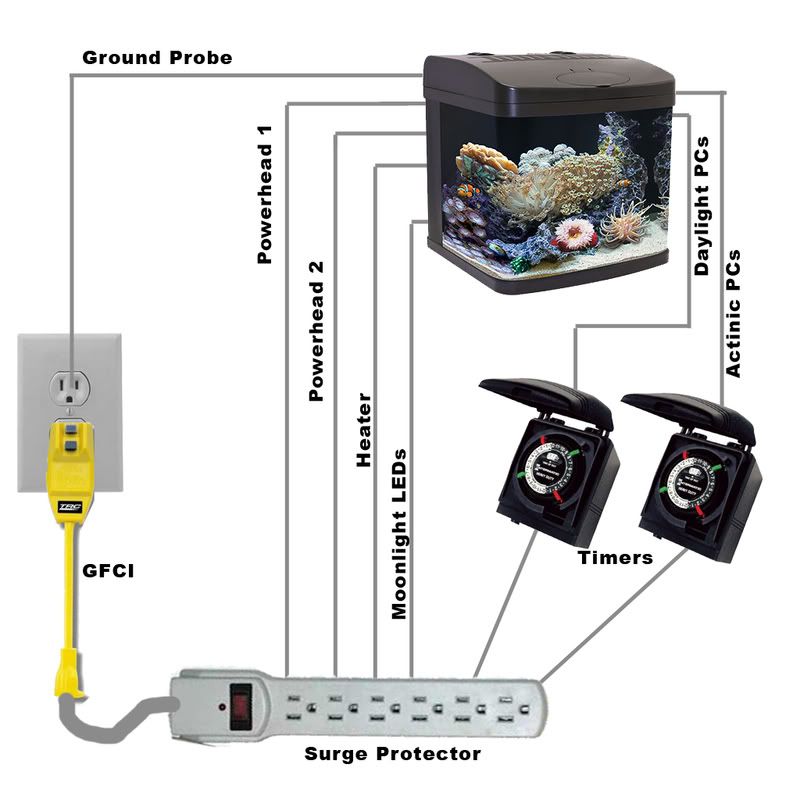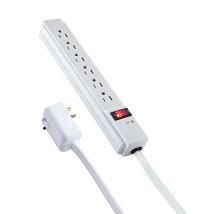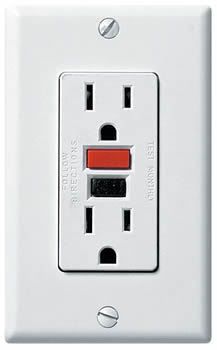Originally Posted by
SCSInet
http:///forum/post/2806769
There are two types of protection out there these days. One is GFCI which is meant for ground fault and human protection, and the other is AFCI (Arc-Fault-Circuit-Interrupter) which is meant for fire safety.
Judging from the printing on the box you posted, I'd say it's an AFCI power strip which will provide some protection on a tank, but not what you need.
GFCIs do not disconnect or trip open the grounding conductor in operation, so it is perfectly acceptable to connect your grounding probe to a GFI outlet's receptacle. As long as the receptacle is wired correctly and securely grounded, you are fine.
Be advised, however, that Wattsup's suggestion will not be solved by a wall receptacle. Wattsup's suggestion is based on the notion that GFIs have been known to trip for no good reason (known as "nuisance tripping"). If this happens when you are at work or otherwise away, you can come home to a dead tank (tounge-in-cheek: nuisance-tank-crashing). Therefore, the idea is to split critical equipment across two GFIs. He didn't elaborate, but most ideally, you want each powerhead fed by a different GFI. This way if one GFI trips, the other will keep your tank alive.
In really big setups, there is often very complete redundancy. My 180g reef is powered by two dedicated 15 amp circuits, each with a GFI. I have multiple pumps, heaters, powerheads, everything all split up. The tank can be fully supported indefinitely if either GFI trips. A wall receptacle like the one shown has ONE GFI protection circuit. Both receptacles will shut off at the same time, so even if you used two power strips, it would all go out.
As far as the triple tap is concerned, your concern is valid, and electrical safety is always a good thing in abundance. Keep in mind that I am talking about the really heavy duty triple taps that are rated for a full 15 amps. Many people think that too many things in one outlet equals a fire hazard, but it's the total draw. A 15 amp receptacle can handle 1,875 watts. If you plugged 180 devices into that outlet that draw 10 watts each, you are at no more risk of overload than plugging in one space heater that draws 1800 watts, as long as the cords (power strips, splitters, whatever) are good quality, UL certified devices, all rated for a full 15 amps. I hope that makes sense. Therefore, if the equipment list of your tank doesn't change, it won't really make a big difference safety wise what taps and cords you use, as long as they are nice heavy duty stuff.
Thanks again SCSInet. What you said was very clear and makes a lot of sense. I definitely have a better understanding. I'm going to research a bit more, especially AFCI. Thanks again.









